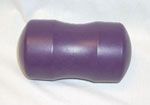Article
Equipment and Processing Report
Equipment and Processing Report
Pigging Can Improve Efficiency and Sustainability
Author(s):
Pigging is a sustainable strategy that can aid in cleaning and product recovery and improve a manufacturing line's efficiency and throughput.
As pharmaceutical manufacturers strive to find green production methods, many companies are discovering that sustainable strategies also can improve efficiency and reduce costs. One such strategy is pigging, the process of injecting a sanitary, solid, silicone rubber projectile into a safe, closed-loop sanitary system to clean out the pipeline between batches (see Figure 1). The projectile, or pig, is forced through a pipeline by compressed air, carbon dioxide, nitrogen, water, or the next product. The pigs generally are made of medical-grade silicone that complies with 21 CFR Section 177.2600 and is approved by the US Food and Drug Administration.

A unit called a pig detector helps ensure that a pig is not lost. A pig detector also automates the pigging system so that operators can send it back and forth in a pipeline accurately (see Figure 2). Some of pigging’s advantages for the pharmaceutical processing industry include the following:
- Product recovery higher than 99%
- Quick product changeovers
- A 50% reduction in water consumption
- A 30% reduction in cleaning-chemical consumption.
Product recovery
Because they rely on expensive ingredients and manufacture valuable finished products, pharmaceutical processors have long sought ways to increase product recovery. Companies typically have addressed the problem by limiting the size of their pipelines because small pipelines are easier to clean than large ones.

But manufacturers do not have to limit pipeline size, which can also reduce productivity. Introducing a sanitary pig into a pipeline effectively pushes usable material into a filler, storage tank, tanker, or a final package for product recovery. Operators also can clean challenging areas such as 90° elbows fully with a pig. Pigging can recover product at a rate higher than 99%. As the value of the recovered product increases, the time required to achieve a return on the investment in the pigging system is shortened.
As more material is recovered and converted into finished product, the scrap volume is decreased, and batch yields rise. Pigging technology is equally effective on pipelines with large diameters, thus pharmaceutical manufacturers can achieve significant increases in production by using 2-in. pipelines rather than the 1-in. models that are currently the standard. Pigs are available in sizes from 0.5 to 8 in.
Improved product recovery increases efficiency, lowers the cost of individual items, and increases a production line’s profitability. A reduction in the scrap rate translates directly into decreased waste-handling and -hauling fees. If scrap liquid product is discharged into the sewer, a lower scrap rate can mean reduced surcharges, especially for high biochemical-oxygen-demand materials.
Product changeover
Many of the pharmaceutical industry’s processes rely on batch manufacturing and produce several batches per day or shift. Time is valuable in such a production environment. Because batch-to-batch consistency and cleanliness are vitally important, the cleaning process must be rigorous. A long cleaning cycle—including a water flush, the introduction of clean-in-place (CIP) chemicals, and another water flush—usually is necessary.
Injecting a sanitary pig into the pipeline, however, can eliminate the need for the initial water flush and the time associated with it. Because pigging cleans the pipeline so effectively, it reduces cross-contamination concerns and quickens the cleaning process. The pig’s effectiveness comes from the fact that it is slightly oversized and pushes out the product like a squeegee.
Pigging typically reduces cleaning cycle time by half, thus enabling more batches to be produced with the same equipment per day or per shift. When pipelines with large diameters are used, these production increases and efficiency gains are compounded. Pigging systems can be used before cleaning validation or integrated into cleaning-validation procedures.
Reduced water and chemical use
For companies that are looking for ways to reduce their environmental footprint, pigging could be a way to reduce water consumption because it eliminates the need for an initial water flush during CIP. The technique could be especially valuable in areas that experience drought conditions.
Companies that switched from traditional CIP systems to pigging systems have reported a water savings of roughly 50% and a chemical savings of about 30%. This reduced use of resources not only saves the cost of water itself, but also the cost of water treatment and sewerage costs. Depending upon the particular circumstances of a production line, this saving can improve the return on the investment in the pigging system.
Reduced cycle times, reduced water and chemical consumption, and greatly increased product recovery and production rates are important reasons that pharmaceutical manufacturers are becoming interested in pigging. This technology helps pharmaceutical manufactures establish sustainable processes on the plant floor and can help them improve their bottom lines.
Neil O’Connor is president of Process Pigging Systems, 1776 Mentor Ave., Cincinnati, OH 45212, tel. 513.731.6005, [email protected], www.ProcessPigging.com.
Newsletter
Get the essential updates shaping the future of pharma manufacturing and compliance—subscribe today to Pharmaceutical Technology and never miss a breakthrough.





